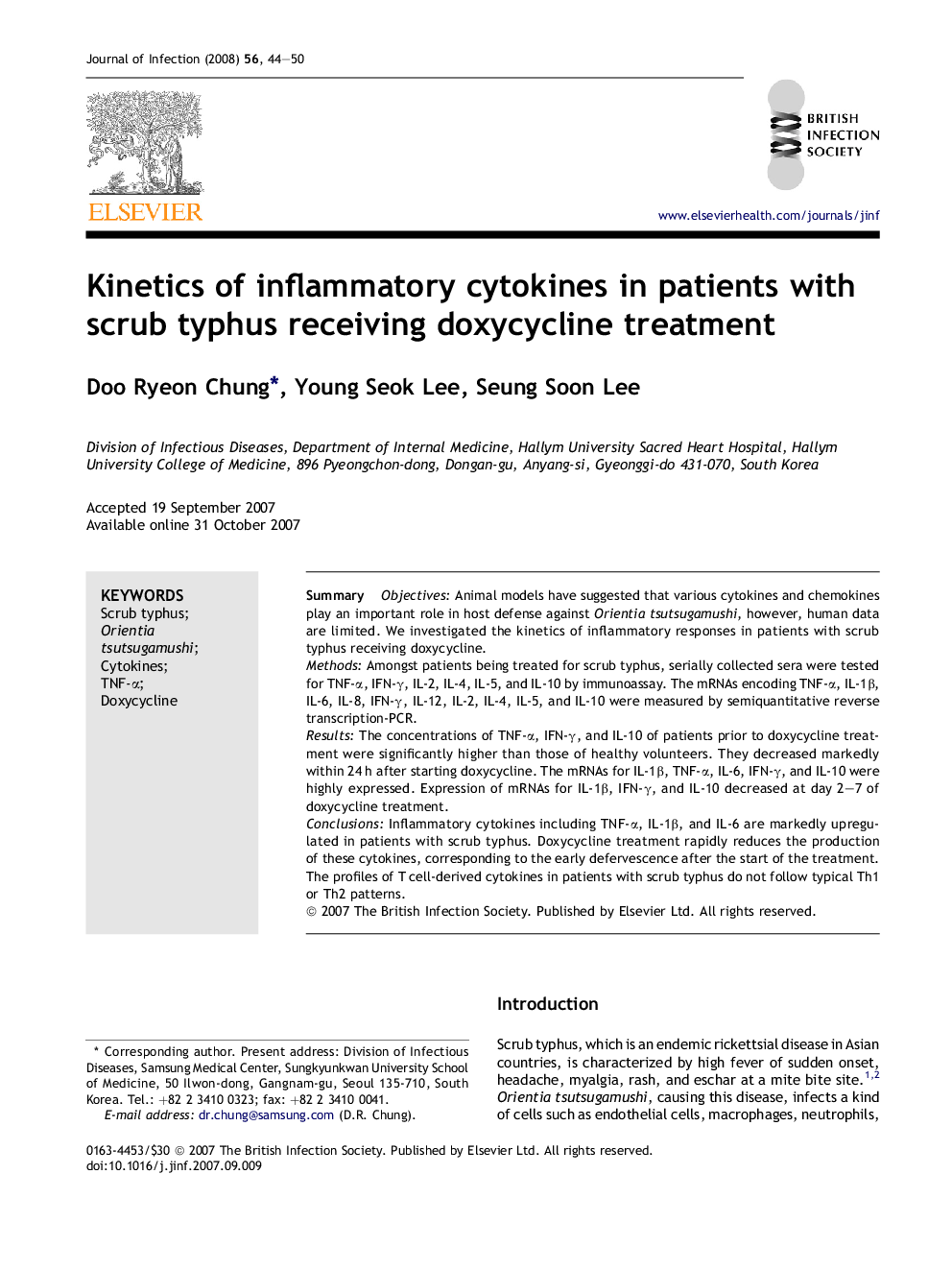| Article ID | Journal | Published Year | Pages | File Type |
|---|---|---|---|---|
| 3375590 | Journal of Infection | 2008 | 7 Pages |
SummaryObjectivesAnimal models have suggested that various cytokines and chemokines play an important role in host defense against Orientia tsutsugamushi, however, human data are limited. We investigated the kinetics of inflammatory responses in patients with scrub typhus receiving doxycycline.MethodsAmongst patients being treated for scrub typhus, serially collected sera were tested for TNF-α, IFN-γ, IL-2, IL-4, IL-5, and IL-10 by immunoassay. The mRNAs encoding TNF-α, IL-1β, IL-6, IL-8, IFN-γ, IL-12, IL-2, IL-4, IL-5, and IL-10 were measured by semiquantitative reverse transcription-PCR.ResultsThe concentrations of TNF-α, IFN-γ, and IL-10 of patients prior to doxycycline treatment were significantly higher than those of healthy volunteers. They decreased markedly within 24 h after starting doxycycline. The mRNAs for IL-1β, TNF-α, IL-6, IFN-γ, and IL-10 were highly expressed. Expression of mRNAs for IL-1β, IFN-γ, and IL-10 decreased at day 2–7 of doxycycline treatment.ConclusionsInflammatory cytokines including TNF-α, IL-1β, and IL-6 are markedly upregulated in patients with scrub typhus. Doxycycline treatment rapidly reduces the production of these cytokines, corresponding to the early defervescence after the start of the treatment. The profiles of T cell-derived cytokines in patients with scrub typhus do not follow typical Th1 or Th2 patterns.
